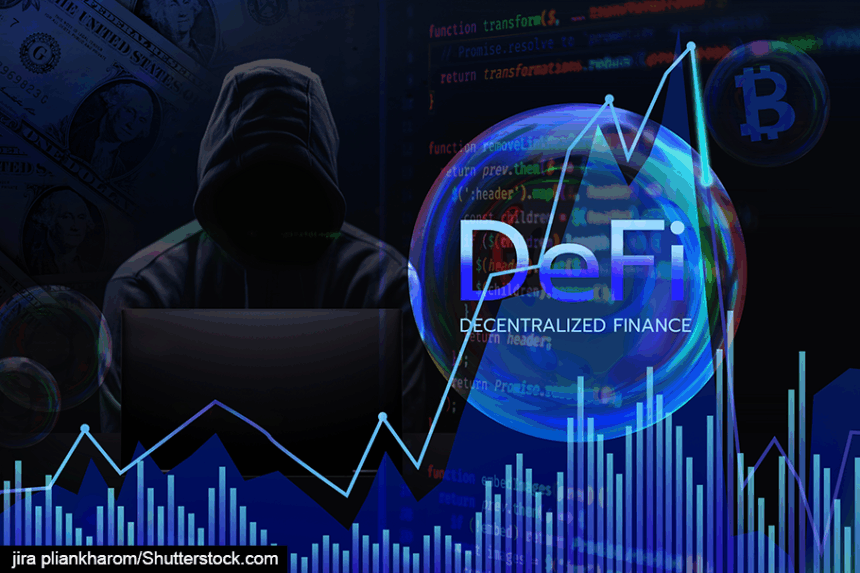In this article, Ill break down flash loans-a game-changing tool in decentralized finance that lets people borrow money on the spot with zero collateral.
Because the entire process happens in a single blockchain block, the loan must be paid back almost instantly, opening the door to tricks like price-arbitrage and fast refinancing. Knowing how flash loans work will help you steer through the ever-changing DeFi world with confidence.
Overview
Decentralized Finance, or DeFi, has shaken up the finance world by letting people trade money directly with each other online.
A standout feature of DeFi is the flash loan. This tool gives users quick, unsecured cash that must be paid back in the same block it was borrowed.

Because of this, traders can tap into big pools of money for a few seconds to snap up deals or balance prices across exchanges.
In this post, well break down what flash loans really are, step through how they work, list smart ways people use them, cover the risks they carry, and stare into the crystal ball to see where this fresh idea might lead.
What Are Flash Loans?
Flash loans let people tap into DeFi money markets to borrow large sums of crypto with no upfront collateral. The big catch, though, is that the loan has to be paid back in the same blockchain block.
If the borrower cant settle the debt before the block closes, the protocol automatically cancels the loan and all related transfers, so nobody loses any coins.
That instant in-and-out loop is what separates flash loans from ordinary borrowing in crypto or traditional finance. Because the deal succeeds or fails as one neat package, lenders dont risk losing their capital in the process.
How Do Flash Loans Work?
Flash loans ride on blockchains atomic transaction model. An atomic transaction either runs from start to finish or rolls back completely, leaving the ledger unchanged. Here is a quick rundown of how the triggers get pulled:
- The borrower pings a DeFi lending platform and asks for a specific loan size.
- The smart contract releases the requested coins into the borrowers wallet.
- The borrower whips the funds into action-arbitrage across exchanges, swapping collateral, or refinancing debt.
- With the pre-set tasks finished, the borrower sends back the original sum plus a small service fee.
- If any part of that chain breaks, the system reverts, and its as if the loan was never made.
Because everything happens in a single block, flash loans offer instant cash without the usual upfront collateral.
Common Use Cases of Flash Loans

Flash loans are popping up in a bunch of everyday DeFi tricks:
- Arbitrage: Traders borrow tokens on the fly to grab price gaps between decentralized exchanges. They scoop up coins cheap on one site, sell them higher elsewhere, pay back the loan, and pocket the extra.
- Collateral Swaps: People swap the backing assets on their loans without closing the old loan first, speeding things up and cutting fees.
- Refinancing: A borrower can snap up a better rate by moving a loan from one platform to another in a single click.
- Self-liquidation: Users take out a flash loan to pay their own debt, dodging harsh liquidation fees and getting their collateral back.
Each example shows how flash loans stretch capital and give traders extra flexibility in DeFi.
Benefits of Flash Loans
Flash loans also bundle together a few standout perks:
- No Collateral Needed: Because the whole deal rolls into one block, there is no need to lock up assets in advance, so just about anyone can use them.
- Instant Execution: The loan opens, the tokens move, and the debt clears in seconds, giving users speed that regular borrowing cant touch.
The Good Side of Flash Loans
Lower Risk for Lenders. Because the loan either pays off within the same block or not at all, lenders face almost no credit risk.
Room for Big Ideas. Flash loans let traders build complex strategies-on-the-fly that used to cost time and money.
These perks turn flash loans into a go-to tool for curious DeFi users and builders alike.
The Hard Side of Flash Loans
Even with obvious upsides, flash loans bring some headaches that cannot be ignored:
Not Beginner-Friendly. Timing, coding, and a solid understanding of smart contracts are a must, so many new users will feel lost.
Targets for Scammers. Hackers have borrowed giant amounts to distort prices, sway votes, or trip up oracles- and some DeFi protocols have paid the price.
Fees Bite Hard. When the network is busy, high gas bills can wipe out any profit from a single loan and leave users stuck.
Thankfully, developers are constantly beefing up security and adding checks to make the space safer for everyone.
The Future of Flash Loans in DeFi
Flash loans have changed the game in decentralized finance by letting anyone borrow large sums of money for just a split second. Because the loan must be paid back in the same block, these instant loans offer fresh ways to move capital, hedge bets, or profit from price gaps.
As DeFi tools mature, well-designed interfaces will hide the code and math, letting regular users run complex strategies with a few taps. Developers plan tighter security checks, and many protocols now include insurance funds that catch bugs or attacks tied to flash loans.
Flash loans show how quickly DeFi evolves and hint at finance that moves as fast as the Internet. Whether arbitraging on different exchanges or collapsing risk in seconds, this tech is becoming a cornerstone of advanced DeFi play.
If you want to dive deeper into DeFi, learning how flash loans work is a must, since they sit at the heart of many cutting-edge strategies.
Conclsuion
To wrap things up, DeFi flash loans let you borrow money on the spot and without upfront collateral, all within one blockchain block. This quick credit opens doors for cool moves like price-sniping arbitrage or debt refinancing.
Still, their speed comes with complicated code and potential hacks, so any user needs to tread carefully. As the entire DeFi scene matures, expect flash loans to spark more ideas while better tools and safety nets keep rising.
FAQ
What is a flash loan?
A flash loan is an uncollateralized loan that must be borrowed and repaid within the same blockchain transaction.
How do flash loans work?
They rely on atomic transactions—if the loan isn’t repaid in the same transaction, it is automatically canceled.
Are flash loans risky?
For lenders, no risk due to instant repayment; for borrowers, complexity and potential exploitation risks exist.









